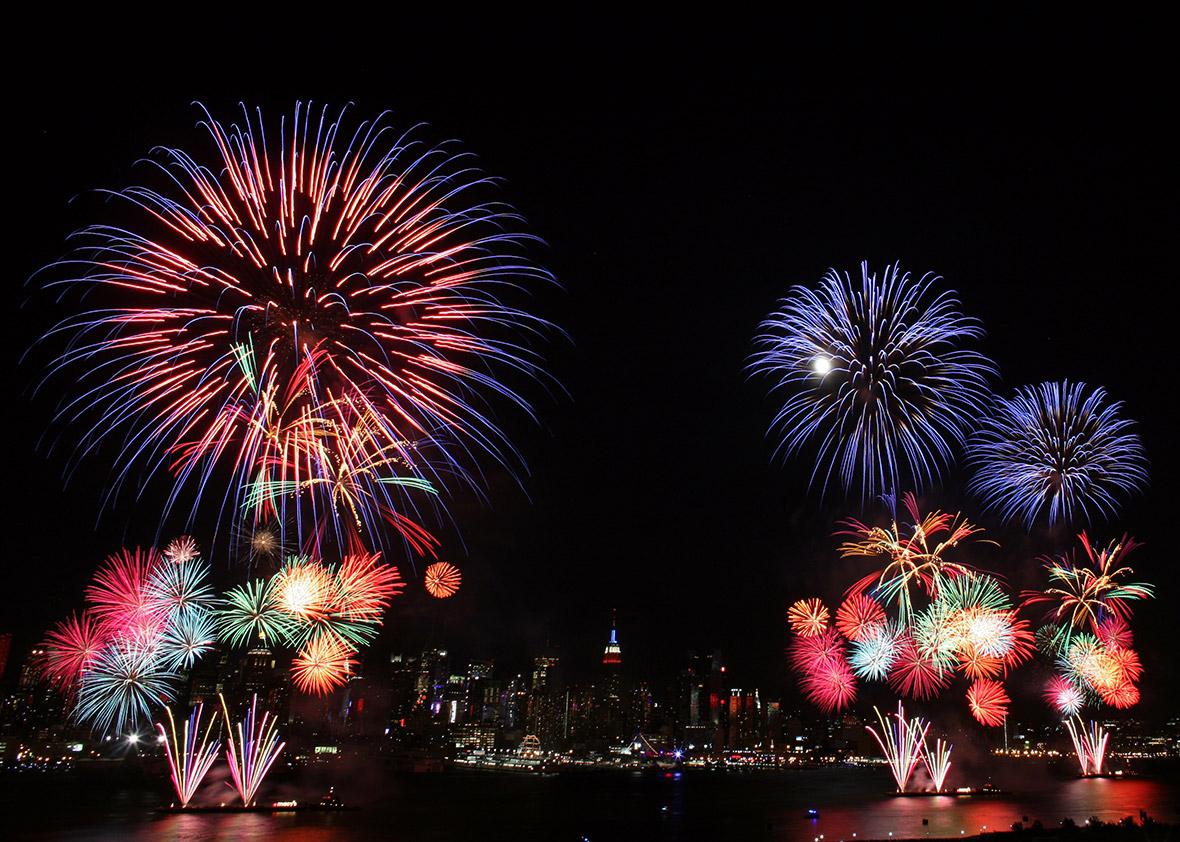For as long as Americans can remember, the nation has celebrated the Fourth of July by staging grand fireworks shows in public squares and lighting smaller displays at home. Why do we commemorate Independence Day by setting off thousands of small explosions?
Because John Adams wanted us to. Before the Declaration of Independence was even signed, he envisioned fireworks as a part of the festivities. In a letter to Abigail Adams on July 3, 1776, he wrote that the occasion should be commemorated “with Pomp and Parade, with Shews, Games, Sports, Guns, Bells, Bonfires and Illuminations from one End of this Continent to the other from this Time forward forever more.” The first commemorative Independence Day fireworks were set off on July 4, 1777. The Pennsylvania Evening Post wrote that in Philadelphia, “The evening was closed with the ring of bells, and at night there was a grand exhibition of fireworks (which began and concluded with thirteen rockets) on the Commons, and the city was beautifully illuminated.” The paper noted that “Everything was conducted with the greatest order and decorum, and the face of joy and gladness was universal.” That same year, fireworks also lit up the sky in Boston, where they were exhibited by Col. Thomas Crafts over the common. By 1783 a large variety of fireworks were available to the public. In 1784 one merchant offered a range of pyrotechnics that included “rockets, serpents, wheels, table rockets, cherry trees, fountains, and sun flowers.”
While some historians have suggested that India first invented fireworks, modern fireworks seem to have come to the West by way of China. Most early fireworks were simply repurposed military munitions, fired for entertainment rather than to frighten or kill the enemy. In the 12th century, the Chinese improved the burning fire arrow (a long-established weapon) by affixing small packs of gunpowder to it. From there it was not long before they invented rockets, simply stuffing a container with gunpowder and leaving a hole in one end for propulsion. These “ground-rats” or “fire-rats,” as they were called, were wildly unpredictable, however, and while this made them less effective, it did contribute to their entertainment value. These rockets made their palace hall debut when emperor Li Tsung brought them before the empress Kung Sheng, but when one scurried up to her, she gathered up her skirts and brought the feast to a halt. During the Renaissance, fireworks became popular in Europe and were used in nationalist and imperialist celebrations by figures like Peter the Great and Louis XIV, who were especially big fans of the pyrotechnics.
Tradition alone, of course, does not explain the popularity of fireworks here and abroad. As with many festive decorations, including streamers, confetti, festival lights, and balloons, people often appreciate them simply for their bright colors. Others may appreciate the technical ingenuity and the choreography that goes into the show. And others just like dramatic loud noises, the sense of destruction, and the thrill of danger. Over time, fireworks shows can bring back memories of other festive occasions and warm summer nights. On the other hand, there are the occasional fireworks haters.
Got a question about today’s news? Ask the Explainer.
